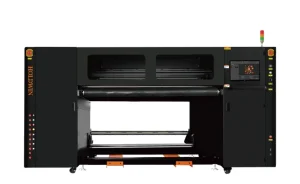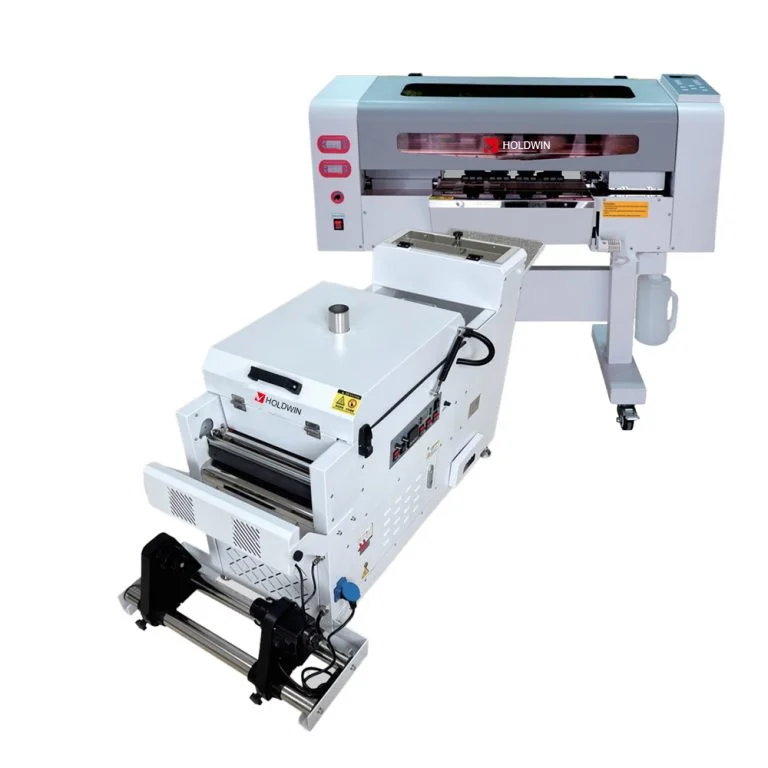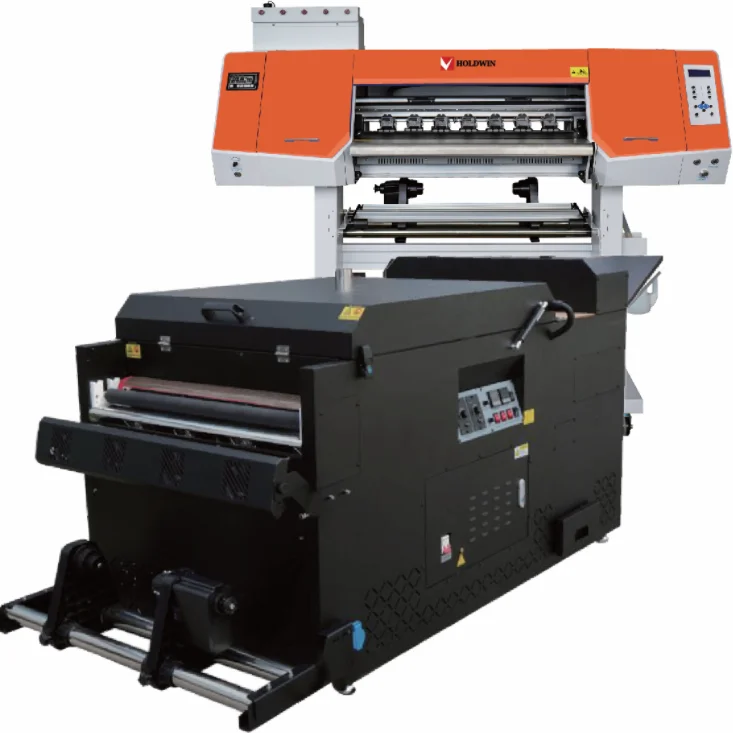
Imagine stepping into a world where your creative visions transfer flawlessly onto fabrics, turning simple garments into vibrant statements. That’s the promise of Direct-to-Film (DTF) printing—a process that lets you apply intricate designs directly from film to textiles without the hassle of traditional screens. Yet, as you dive deeper, challenges arise: nozzles that clog unexpectedly, colors that shift off-tone, or films that wrinkle mid-print. These hurdles can stall your production and erode profits.

Holdwin stands out as a leader in digital printing solutions, offering machines built for precision and endurance. Their lineup features advanced Epson printheads, automated ink systems, and robust frames that handle everything from small runs to industrial scales. What sets them apart? A focus on user-friendly automation that saves time and cuts waste, all while delivering sharp, durable results on cotton, polyester, or blends. Whether you’re a startup crafter or a scaling manufacturer, Holdwin’s tools empower you to produce professional-grade outputs with confidence. Explore their offerings at Holdwin to see how they align with your workflow.
In this guide, you’ll discover practical steps to sidestep the five most frequent DTF pitfalls. Each section builds on the last, starting with maintenance basics and progressing to advanced output controls. By the end, you’ll have a clear path to smoother operations, drawing from real-world features in top-tier printers.
You know the frustration when a print job halts because ink has built up in the nozzles, especially with white ink that settles quickly. This clogging disrupts flow and demands constant manual intervention, pulling you away from creative tasks.
To counter this, prioritize machines with built-in safeguards. Look for systems that use negative pressure to keep ink circulating smoothly, paired with timed cleaning cycles that flush residues without your input. For instance, the HW-302F+DF300 excels here. Its dual F1080 heads maintain steady pressure, while an integrated cap prevents drying during pauses. You set the schedule once, and it runs cycles automatically—often every few hours or after idle periods—ensuring nozzles stay clear for uninterrupted runs.
This approach not only extends head life but also stabilizes your daily output. In a busy shop, where you might print dozens of shirts a day, such features mean fewer surprises and more predictable timelines. As you integrate this into your setup, notice how production speeds up; what once took extra wipes now flows seamlessly into the next step: securing that ink to the film.

Once clogs are off your list, turn to adhesion—the glue that holds your design through washes and wears. Poor bonding often stems from uneven powder spread, leaving edges to lift or colors to fade after the first cycle.
You can fix this by adopting shakers that distribute adhesive precisely across the print area. These units vibrate at controlled rates, coating film evenly without excess buildup. Consider the HW-604I+DF800, which pairs a high-capacity shaker with sensors that adjust based on powder levels. You load the film, hit start, and it applies just enough for strong holds on diverse fabrics, from heavy cottons to silks.
The result? Transfers that withstand 50+ laundry rounds, boosting customer satisfaction and repeat orders. This reliability bridges directly into color work, where even adhesion sets the stage for true-to-life hues that don’t bleed or dull.
With adhesion solid, colors become your focus. Inconsistent shades—say, a bold red turning pink—arise from mismatched profiles or uneven layering, forcing reprints that eat into margins.
Equip yourself with RIP software that calibrates on the fly, handling white underlays and overprints with precision. Variable dot tech lets you fine-tune droplet sizes for smoother gradients. The HOLDWIN-620 Pro UV shines in this realm, leveraging triple Epson I3200-U1 heads and software like MainTop for ICC-standard matching. You input your design, select the media type, and it layers white beneath colors automatically, yielding vibrant results even on dark bases.
You gain control over every pass, reducing trial runs and waste. This precision flows naturally into media handling, where stable films prevent shifts that could otherwise skew your carefully matched palette.
Colors pop when the film lies flat, but wrinkles from poor feeding can distort everything. Tension mismatches pull or slacken the material, leading to skewed alignments and wasted sheets.
Opt for rollers that grip and guide with adjustable force, keeping film taut throughout. The HW-302F+DF300 returns here as a versatile choice, its 0.75mm-compatible feeders using servo motors to maintain even pull. You calibrate tension per job—light for thin films, firm for thicker ones—and it holds steady, even at high speeds.
This stability cuts errors in half, letting you stack jobs without constant adjustments. From there, curing takes over, locking in your wrinkle-free print before any handling risks reintroduce bends.
Finally, curing seals the deal. Spotty drying creates bubbles or weak spots, undermining all prior efforts. Heat or UV inconsistencies, often from ambient changes, amplify this.
Choose dual-lamp setups that cure uniformly, with water-cooling to avoid hotspots. The HOLDWIN-620 Pro UV leads with its LED array, which you activate post-print for instant hardening. Sensors monitor output, adjusting intensity as needed, so you get even results across batches.
You end up with films ready for heat press in minutes, not hours. This wraps your workflow efficiently, minimizing defects and maximizing throughput.
You’ve now mapped a path through DTF’s toughest spots, from clean heads to cured films. By weaving in these targeted fixes, you streamline your process, cut costs, and elevate quality. Features like automated cycles and precise controls turn potential setbacks into strengths, scaling with your ambitions.
For hands-on guidance, reach out to the service team. They offer 24/7 consultations, free samples, and engineer-led setups to tailor solutions to you. Contact them today to discuss partnerships and drive your success forward.
Q: How often should I run cleaning cycles on my DTF printer to avoid clogs?
A: Schedule automatic cycles every 4-6 hours of operation, or after each job if using heavy white ink loads. This keeps nozzles clear without over-wetting.
Q: Can these solutions work for both small-scale and large production runs?
A: Yes, scalable features like adjustable shakers and multi-head configs adapt seamlessly, supporting everything from custom tees to bulk orders.
Q: What if my environment has high humidity—does it affect curing?
A: Water-cooled UV lamps mitigate this by maintaining steady temperatures; pair with dehumidifiers for optimal results in damp spaces.

Zhiyu is passionate about good products, good services, and good prices to let consumers know that choosing us is the right choice! For partners and end customers, we will provide one-on-one considerate smart services and provide you with more high-quality procurement solutions.